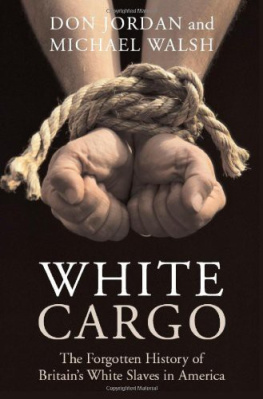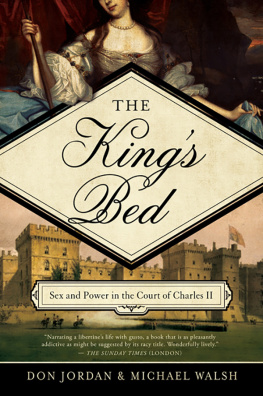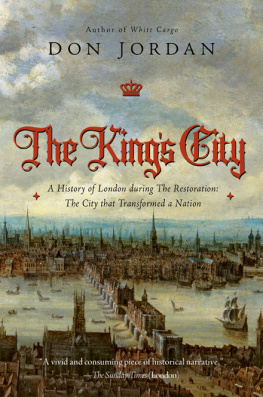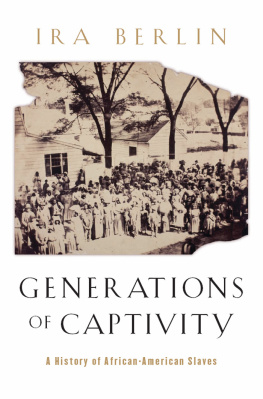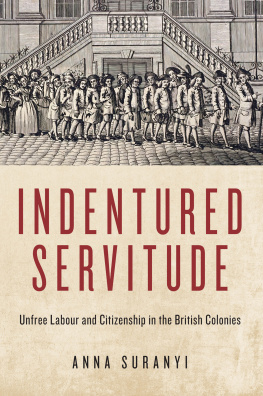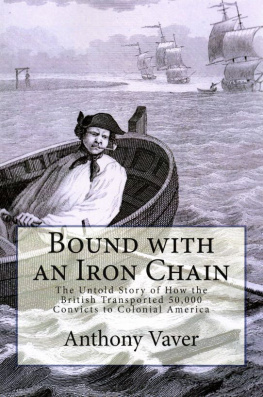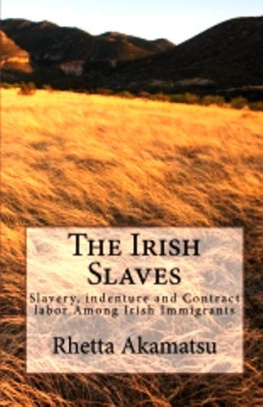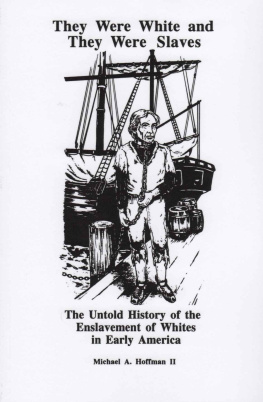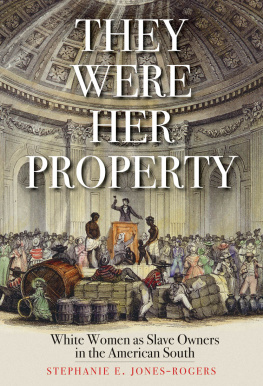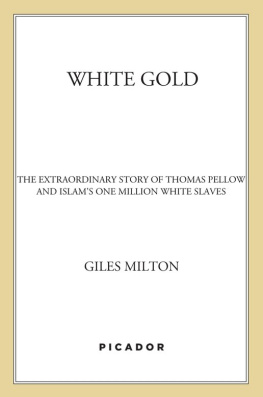WHITE
CARGO
The Forgotten History of Britains White Slaves in America
DON JORDAN and MICHAEL WALSH

NEW YORK UNIVERSITYPRESS Washington Square, New York
To Dian
and
To Eithne
Copyright Don Jordan and Michael Walsh, 2007
All rights reserved
The moral right of the authors has been asserted
First published in the U. S. A. in 2008 by
NEW YORK UNIVERSITY PRESS
Washington Square
New York, NY 10003
Library of Congress Cataloging-in-Publication Data
Jordan, Don.
White cargo: the forgotten history of Britains Whiteslaves in America / Don Jordan and Michael Walsh.
p. cm.
First published: Edinburgh: Mainstream Pub., 2007.
Includes bibliographical references and index.
ISBN 978-0-8147-4296-9 (alk. paper)
1. Slavery--United States--History--17th century. 2.Slavery--United States-- History--18th century. 3. Whites--UnitedStates--Social conditions--17th century. 4. Whites--United States--Socialconditions--18th century. 5. Indentured servants- -United States--History. 6.United States--History--Colonial period, ca. 1600-1775. 7. Whites--GreatBritain--Social conditions--17th century. 8. Whites--Great Britain-Socialconditions--18th century. 9. Great Britain--Social conditions--17th century.10. Great Britain--Social conditions--18th century. I. Walsh, Michael. II.Title.
E446. J665 2007
306. 362097309034--dc22
2007037976
Typeset in Galliard
New York University Press books are printed on acid-freepaper, and their binding materials are chosen for strength and durability.
Manufactured in The United States of America 10 9 8 7 6 5 43 2 1
CONTENTS
INTRODUCTION - IN THE SHADOW OF THE MYTH
CHAPTER ONE - A PLACE FOR THE UNWANTED
Elizabethan adventurers dreamed of an American empire thatwould give them gold and glory. Others saw the New World as a dumping groundfor Englands unwanted poor.
CHAPTER TWO - THE JUDGES DREAM
A highwayman who became Lord Chief Justice planned tocolonise America with criminals. He began to empty Englands gaols and set aprecedent.
CHAPTER THREE - THEMERCHANT PRINCE
The mastermind behind the first successful English colonyin America was reputedly Britains richest man. He kept a fledgling Virginiagoing and paved the way for the first white slaves.
CHAPTER FOUR - CHILDREN OF THE CITY
The Virginia Company wanted youngsters to work in thetobacco fields. The burghers of London wanted rid of street children. So abargain was struck and hundreds of children were transported.
CHAPTER FIVE - THE JAGGED EDGE
The New World was a magnet for the poor. To get there, theyhad to mortgage their labour in advance. They were not to know that they hadcontracted into slavery and might well die in bondage.
CHAPTER SIX - THEY ARE NOT DOGS
Virginia was run by planters who pushed through laws thatrelegated servants and apprentices to the status of livestock. Notionallythey had rights but planters were literally allowed to get away with murder
CHAPTER SEVEN - THE PEOPLE TRADE
In the 1630s, almost 80, 000 people left England for theChesapeake, New England and the Caribbean, most of them indentured servants. Aruthless trade in people developed in which even a small investor could makemoney.
CHAPTER EIGHT - SPIRITED AWAY
Untold numbers were kidnapped or duped onto America-boundships and sold as servants. The spiriting business became as insidious andorganised as the cocaine racket today. Even magistrates took a cut of theproceeds.
CHAPTER NINE - FOREIGNERS IN THEIR OWN LAND
Ethnic and religious cleansing in Ireland became a model forNative Americans being cleared from the Chesapeake. During the Cromwell era,still more were displaced and Ireland became a major source of slaves for theNew World.
CHAPTER TEN - DISSENT INTHE NORTH
Until the 1650s, Scotland fought shy of transporting itsunwanted to any English colony. Then religious and political dissent were madepunishable by transportation to the Americas. Sometimes more died on the waythan ever reached the New World.
CHAPTER ELEVEN - THE PLANTER FROM ANGOLA
The idea that Africans were Virginias first slaves isrevealed as a myth through the story of one who became a planter himself andwent on to own whites as well as blacks.
CHAPTER TWELVE - BARBADOSED
In the 1640s, Barbados became the boom economy of the NewWorld. The tiny islands sugar industry would outperform all its rivals inprofits - and in its ruthless use of slave labour.
CHAPTER THIRTEEN - THE GRANDEES
A planter aristocracy emerged in the Chesapeake. Itsmembers dealt in men, land and influence, creating dynasties that dominatedAmerica for centuries. But stories of brutality deterred would-be settlers fromemigrating.
CHAPTER FOURTEEN - BACONS REBELLION
The planters nightmare of a combined uprising by blacksand whites came true when a charismatic young aristocrat turned an Indian warinto a campaign against his own class, the English grandees. Swearing neveragain, the grandees set out to divide the races.
CHAPTER FIFTEEN - QUEENANNES GOLDEN BOOK
Bogus promises of free land persuaded hordes of Europeansto sell up and leave for America. They began a nightmare journey that left someso impoverished they sold their children to pay the fare. But some outfoxedtheir exploiters.
CHAPTER SIXTEEN - DISUNITY IN THE UNION
Scottish clansmen were sold as servants in the Americaswhile their chieftains were allowed a comfortable exile in France - twodifferent fates for Jacobites after 1715. Merchants made fortunes selling theclansmen in six different colonies.
CHAPTER SEVENTEEN - LOST AND FOUND
The tide of kidnapping continued under the Hanoverians. Intwo famous instances, victims returned, as if from the dead, to denounce theirabductors. One claimed to be heir to an earldom, kidnapped by the man who stolehis birthright.
CHAPTER EIGHTEEN - HISMAJESTYS SEVEN-YEAR PASSENGERS
After 1718, England subsidised the convict trade andAmerica was deluged with British jailbirds. Paranoia grew, with soaring crimerates and epidemics blamed on convicts. Only employers were happy: a convictservant was half the price of an African slave.
CHAPTER NINETEEN - THE LAST HURRAH
Having won their liberty in the War of Independence,Americans had no intention of allowing their country to serve as a penal colonyever again. Britain had other plans and an astonishing plot was born.
NOTES
SELECT BIBLIOGRAPHY
INDEX
INTRODUCTION
IN THE SHADOW OF THE MYTH
Slaverythey can have everywhere. It is a weed that grows in every soil.
- Edmund Burke
Thatman who is the property of another, is his mere chattel, though he continue aman.
-Aristotle, A Treatise on Government
In the summer of 2003, archaeologists excavated aseventeenth- century site outside Annapolis, Maryland, and discovered theskeleton of a teenage boy. Examination showed the boy to have died sometime inthe 1660s. He was about sixteen years old and had tuberculosis. His skullshowed evidence of a fearful mouth infection, and herniated discs and otherinjuries to his back were synonymous with years of hard toil.
The youth was neither Africannor Native American. He was northern European, probably English. His remainswere found in what had been the cellar of a seventeenth-century house, in ahole under a pile of household waste. It was as if the boy was of so littleaccount that after he died he was thrown out with the rubbish.
Forensic anthropologistsbelieve the youth was probably an indentured servant - the deceptively mildlabel commonly used to describe hundreds of thousands of men, women andchildren shipped from Britain to America and the Caribbean in the 150 yearsbefore the Boston Tea Party in 1773. Most of these servants paid their passageto the Americas by selling the rights to their labour for a number of years.Others were forcibly exiled and sold in the colonies as servants for up tofourteen years. Many were effectively enslaved.
Next page
